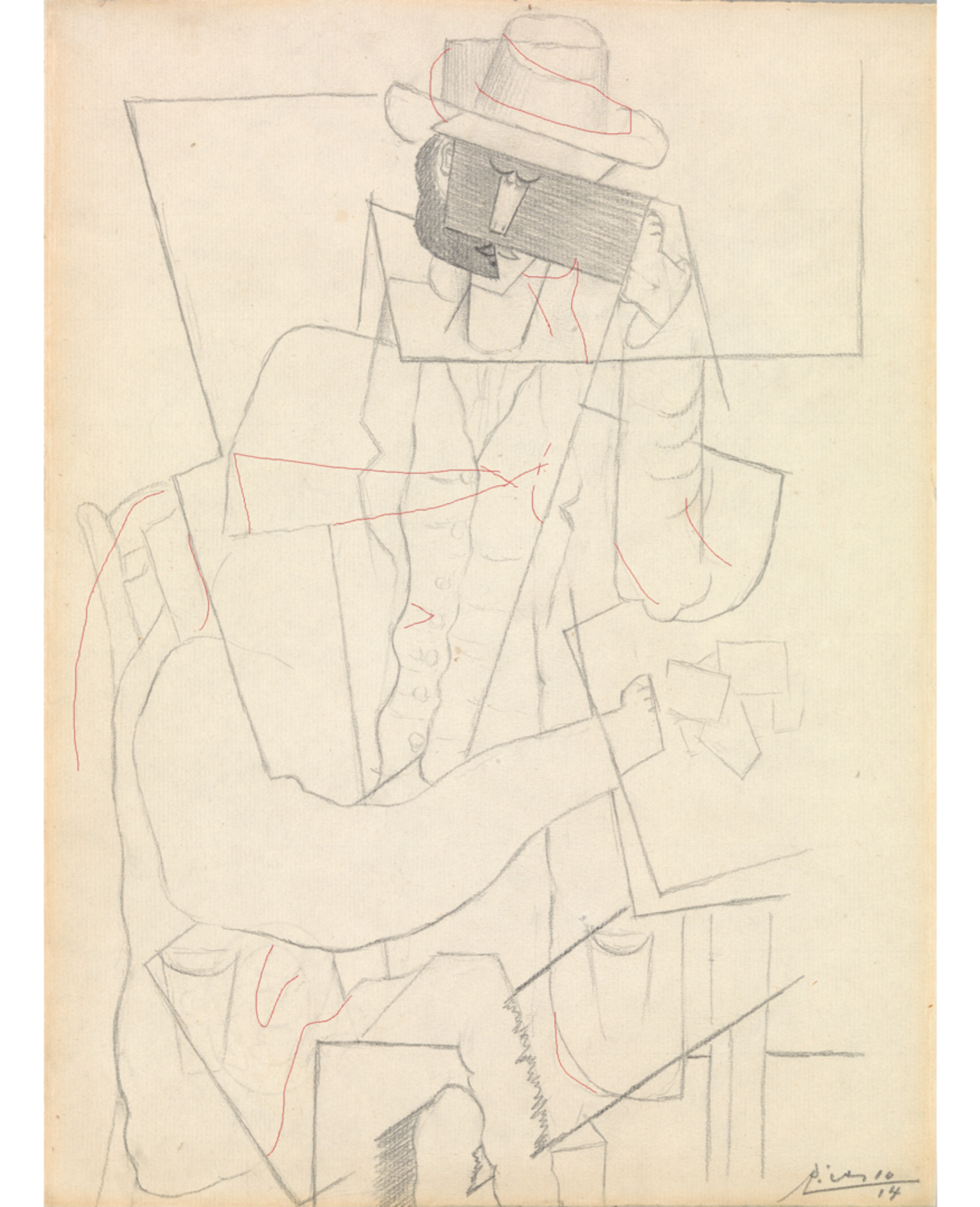
Pablo Picasso (1881–1973), Man Leaning on a Table with Playing Cards, 1914. Graphite on off-white laid paper, 12 3/8 x 9 3/16 in. (31.4 x 23.3 cm). Promised Gift from the Leonard A. Lauder Cubist Collection © 2016 Estate of Pablo Picasso / Artists Rights Society (ARS), New York
The graphite found in common household pencils is mixed with clay, and the hardness and color of the mark it leaves is dependent upon the ratio of its components. In this work, Picasso first drew a basic composition with faint strokes, applying very little pressure to the pencil. As the image progressed, he used thicker, stronger lines that emphasize certain shapes while allowing others to act as background or subtle detail. To create the textures of the beard and face, Picasso turned his pencil on its side, using long strokes for one effect and crisscross marks for another. The passage of light and shadow on the figure’s knee has the heaviest application of graphite. Close examination reveals a network of fine and partially erased lines, an indication that Picasso altered his earlier composition lines and details as he drew.

FIG. 1. Picasso changed his design as he worked. The red lines added to this image by the conservator indicate the location of faint or erased lines.
For more information, see:
Karmel, Pepe. "Incessant Invention: Picasso's Drawings, 1914–1916." In Cubism: The Leonard A. Lauder Collection (MMA, 2014), pp. 188–192, 317.
